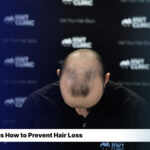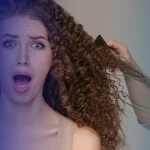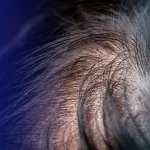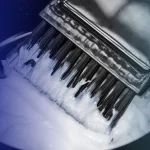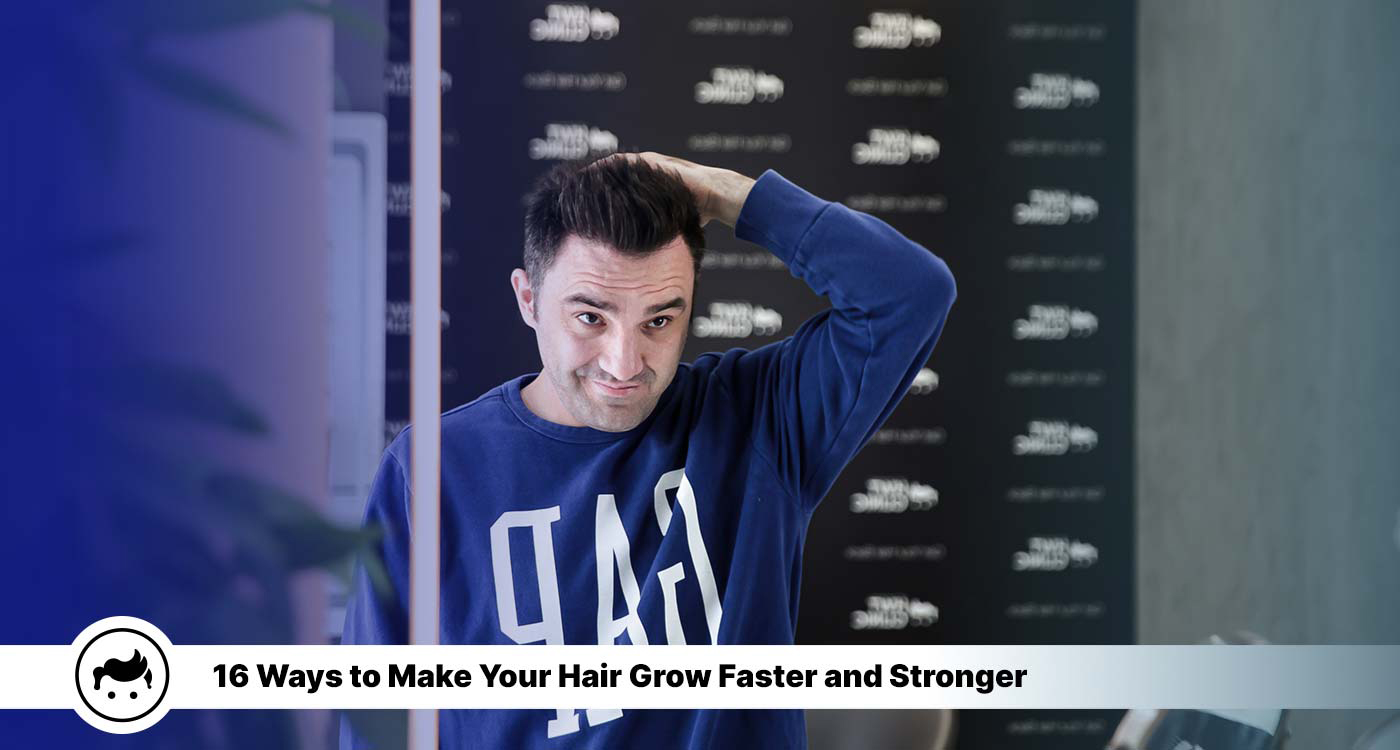
Hair growth occurs when scalp follicles create new hair fibers. Each hair strand grows, rests, and sheds in cycles. Genetics, hormones, and health affect hair growth. Diet, exercise, and stress management boost hair growth. Age, sex, and hormones possibly all alter hair growth rate. Hair grows 0.5 inches (1.25 cm) every month or 6 inches (15 cm) yearly. If you ask this question “How do you make your hair grow faster?”, the answer is using a balanced diet rich in vitamins and minerals, regular scalp massages, and minimizing heat and chemical damage can promote faster hair growth. Moreover, growing hair faster is challenging, but it is feasible with the appropriate strategy to accelerate its natural growth. Ensure to consume a nutritious and well-balanced diet as the first step in promoting rapid hair growth. Eating meals rich in vitamins A, B-complex, C, and E, as well as biotin, promotes good scalp circulation and strengthens hair strands. Adding protein to the diet provides extra nutrients for developing hair and supports healthy follicles. The second step in promoting fast-growing tresses involves proper care techniques, such as avoiding tight hairstyles such as braids or ponytails, which are able to pull on delicate strands over time, causing breakage or even baldness; instead, opt for loose styles such as buns or low ponytails when necessary. Additionally, frequent cuts every 6 to 8 weeks help eliminate split ends, minimizing additional damage along the length of each strand and enabling hair to reach its maximum potential size without internal obstructions. Finally, using natural oils such as coconut oil, argan oil, or olive oil straight to a wet scalp and massaging them into the roots helps alleviate dry skin while askistimulating blood flow, resulting in healthier hair. Lastly, essential oils also increase moisture, so minimizing frizz and preventing tangles, resulting in fewer knots when combing through damp hair afterward.
The three main ways to make hair grow faster and stronger are listed below.
Table Of Content
Consuming a wide range of foods that are high in nutrients and give the body all essential elements for maintaining maximum health and well-being is the definition of a healthy diet. A balanced diet helps the hair grow quicker and stronger by supplying the body with the nutrients required for good hair development. Some advantages of eating a healthy diet are that it promotes healthy hair growth, makes the hair stronger, provides natural oils, maintains a healthy scalp, reduces hair loss, and reduces breakage. Protein, iron, zinc, vitamin C, vitamin D, omega-3 fatty acids, and biotin-rich foods help to stimulate healthy hair development by supplying the body with the nutrients required for hair growth. A diet high in protein, iron, zinc, and biotin assists in strengthening the hair by giving the body what it needs to produce healthy hair. Adding foods high in omega-3 fatty acids to the diet helps the hair’s natural oils give hair a healthy shine. Getting enough of the nutrients in foods rich in vitamin C, vitamin D, and omega-3 fatty acids helps promote a healthy scalp by providing the body with the nutrition it needs to keep the skin and follicles of the scalp operating regularly. Additionally, it is recommended to have a diet high in protein, iron, zinc, and biotin to prevent hair loss and breaking. However, some things are able to go wrong, even though eating healthy is good for the hair in many ways. Some disadvantages of eating healthy for hair are lack of variety, being more expensive, time-consuming, extreme dieting, and food allergies. One risk of a monotonous diet is that it leads to vitamin deficiencies due to a lack of diversity. It is possible that some individuals do not consume a balanced diet because they are unaware that they are deficient in one or more nutrients. Additionally, eating fresh produce, lean meats, and whole grains is more costly than eating a diet high in processed foods. It also takes more time to prepare nutritious meals. Moreover, nutrient shortages are possible on minimal diets like vegan and raw food. Some individuals with food allergies are unable to eat certain foods. However, no concrete proof exists that following a specific diet hastens hair growth. The main determinants of hair development are genetic and hormonal factors. The nutrients required for good hair development are obtained by eating a balanced diet that contains nutrient-dense foods like fruits, vegetables, lean protein, and healthy fats. Also, maintaining healthy hair is aided by avoiding food that promotes irritation and vitamin deficits.
The fibrous protein keratin is the basis for the structural elements of hair, skin, and nails. Adding keratin to the diet helps enhance the overall strength and health of the hair. Various keratin supplements are available, including pills, capsules, and powders mixed into meals or beverages. Additionally, they are present in hair care items, including shampoos, conditioners, and hair masks. Supplementing hair with keratin has benefits. Keratin is a structural protein in most human hair, nails, and skin. Keratin supplements strengthen hair’s strength and integrity, making it less prone to breakage and damage. It also assists in enhancing the overall appearance of hair by making it seem thicker and healthier, promoting hair growth, and minimizing hair loss by supplying the required building blocks for healthy hair development. Additionally, Keratin supplements protect hair from environmental influences such as UV exposure, heat styling, and chemical treatments and enhance suppleness, which helps lessen the likelihood of breaking or damage. On the other hand, there are some potential disadvantages to consider while supplementing hair with keratin. It is vital to consult the doctor before beginning to increase keratin, as certain drugs possibly interfere with keratin supplements. Moreover, some individuals are allergic to keratin supplements, resulting in itching, redness, and other symptoms. They are expensive, not always reimbursed by insurance, and are not appropriate for everyone, including persons with specific medical problems and pregnant or nursing women. Furthermore, there need to be more scientific studies on the usefulness of keratin supplements for hair health. Hair development is mainly governed by genetics and hormonal variables. Thus, supplementing with keratin alone is not directly connected to helping hair grow quicker. Additionally, Keratin-containing shampoos, conditioners, and treatments promise to grow hair faster and stronger. A keratin treatment is one method of using keratin as a hair supplement. It is often applied to the hair and then sealed into the hair with heat, typically with a flat iron. Remember that these treatments possibly become pricey and do not work for the hair type. The benefits are short-lived, and you’ll need to keep up with the procedure every few weeks. Moreover, the use of a food supplement containing keratin is yet another method of using keratin to improve hair. More study is required to prove the safety and efficacy of these supplements, but for now, it is essential to note that their effectiveness needs to be well-established.
Caffeine is a popular stimulant in drinks such as coffee, tea, and colas. It is a component in several hair care products that claim quicker and stronger hair growth. Caffeine encourages hair growth by increasing blood flow to the scalp. It also aids in inhibiting DHT (dihydrotestosterone), a hormone that induces hair loss and thickens hair by encouraging the development of new hair shafts. There are possible benefits to consuming caffeine on hair follicles; however, there are also potential drawbacks. Caffeine possibly irritates the scalp, particularly in high doses, which results in itching, redness, and other irritation symptoms. Some individuals are sensitive to caffeine, which triggers a rash or other allergy symptoms. Additionally, caffeine is likely not helpful for everyone; thus, some individuals are not profiting from it. However, there need to be more scientific studies on the effects of caffeine on human hair growth. Hence, it needs to be clarified how effectively it promotes hair growth and prevents hair loss. Most research on caffeine and hair growth has been done on animals. Only a few studies have been done on people. Some studies have shown promising results, such as making hair grow faster and stopping hair loss. However, these results need to be confirmed by more research. Furthermore, there are three ways to use caffeine for hair follicles. First, caffeine is possibly delivered straight to the scalp using a shampoo or hair serum packed with caffeine. The products are available at various hair care shops and online. Second, a DIY hair mask is another way to use caffeine for follicles. Mix a tiny quantity of caffeine powder with the typical hair conditioner to create a hair mask. Apply the mixture to the hair and scalp and allow it to sit for a few minutes before washing. Lastly, caffeine is also be applied to the scalp by combining it with a carrier oil, such as coconut oil, and rubbing it in. Allow it to sit for a few minutes before washing. Moreover, caffeine-containing hair products have yet to be shown to be beneficial, and additional study is required to assess their safety and efficacy. Always check with a doctor before trying a new hair care routine or product.
Using carrier oils and essential oils to enable quicker and stronger hair growth is an organic method that some individuals apply to enhance the health of their hair. Carrier oils, including coconut oil, olive oil, and avocado oil, serve as a foundation for essential oils and are extremely concentrated plant oils containing numerous therapeutic components. They nurture the hair and scalp, strengthen, soften, and make the hair more manageable. They also promote hair development by preventing hair loss and fostering healthy growth. Meanwhile, essential oils, including lavender, rosemary, and peppermint, are believed to comprise qualities that promote hair and scalp health. They encourage hair development by increasing blood flow to the scalp and preventing hair loss by balancing its natural oils. A correlation exists between utilizing a carrier and essential oils for hair and faster, healthier growth. They also have drawbacks, although they benefit hair. Allergic responses, including rashes, have been linked to using some carriers and essential oils. One must do a patch test to rule out any sensitivities before utilizing a new product on the scalp. Furthermore, an overly oily scalp and hair brought on by using too many oils possibly clog hair follicles and form hair that seem greasy. There is a difference between essential oils and carrier oils. Pick pure, high-quality oils instead of more affordable replacements that include contaminants or additives if possible. Moreover, it is only for some. Carrier and essential oils for hair growth have few studies, so their hair growth and loss prevention effects are still being determined. It is also necessary to observe that scientific analysis on the effectiveness of carrier and essential oils on hair development is limited; thus, consult a doctor before using new hair products.
First and foremost, hot oil therapy is one of the many methods for applying carrier and essential oils to the hair. Add a few driblets of essential oil to a tablespoon of coconut or olive oil. Apply the heated mixture to the scalp and massage it; then, wait a half hour or an hour before washing the hair. Second, use pre-shower prep. Applying a few drops of essential oil to a carrier oil and massaging it into the scalp and hair is a great way to get healthy hair and scalp. And finally, the third way is to use a leave-in treatment that includes oils. Apply to the hair by combining a few drops of essential oil with carrier oil. Combed the hair to distribute the mixture, and then the scalp is able to be massaged to seal it. Use a carrier oil and a few drops of essential oil to massage the scalp; wash it with shampoo after a few minutes. On the other hand, many brands sell Carrier Oils and Essential Oils for Hair Growth. Some of the brands are Viva Naturals and Moroccanoil. Viva Naturals sells hair-care carrier oils. Carrier oils moisturize and nourish hair by diluting essential oils. Jojoba, Argan, and Coconut are Viva Naturals hair carrier oils. Jojoba strengthens and grows hair. Argan oil’s antioxidants and vitamins nourish hair and the scalp. Coconut oil moisturizes and prevents broken ends. The carrier oils are used alone or with essential oils to make a hair treatment. Meanwhile, Moroccanoil hair products contain argan oil as the primary component. The products are able to nourish, repair, and protect all hair types: Shampoos, conditioners, masks, oils, and styling products. Moroccanoil Original Treatment is the brand’s premier styling, finishing, and conditioning hair oil. Its lightweight, non-greasy formula moisturizes and shines hair. It feeds, protects, and revives hair with a unique mix of argan oil, vitamins, and antioxidants. They restore hair, reduce frizz, and give volume and luster.
Vitamins and nutrients assist in making the hair grow quicker and stronger. The hair is composed of a protein called keratin, and specific vitamins and minerals are necessary for its creation and preservation. Some vital vitamins and minerals for nutritious hair growth comprise vitamins A, C, D, and E, iron, zinc, B vitamins, Folate, Calcium, and Magnesium. Regularly consuming vitamins and nutrients offers potential advantages. Vitamins and minerals, such as Vitamins A, C, D, and E, Iron, Zinc, and Biotin, are vital for making and safekeeping nutritious hair because they help hair grow and stop hair from falling out. They help to make hair stronger by making it more flexible and stopping it from breaking. Additionally, a healthy scalp is important for nutritious hair growth. Specific vitamins and minerals are able to help promote a healthy scalp by keeping the balance of oils and preventing dandruff. Eating a well-balanced, vitamin- and mineral-rich diet also improves overall health, which helps hair grow. On the other hand, vitamins and minerals benefit the hair, but there are downsides. Too many vitamins and minerals induce nausea, diarrhea, and headaches. Consult a doctor before using supplements, since excessive vitamin and mineral consumption is dangerous. Additionally, ensure that the vitamins and minerals do not conflict with the patient’s prescriptions. Vitamins and minerals alone do possibly not help hair grow quicker and stronger due to genetics, hormones, and general health. Moreover, human hair growth and vitamin and mineral consumption are little studied, so their hair growth and loss prevention effects are unclear. Vitamins and minerals possibly do not treat hormonal imbalances, autoimmune illnesses, and other medical factors impairing hair development. Meanwhile, there are three ways to consume Vitamins and Nutrients for Hair Growth. First, eat a balanced diet. Vitamins and minerals assist hair growth. Eating vitamin and mineral-rich food, such as spinach, kale, eggs, oysters, sweet potatoes, bell peppers, and carrots, are able to help obtain all the vitamins and minerals needed for vigorous hair. Second, take supplements if the diet does not provide enough vitamins and minerals. See a doctor before using supplements. Lastly, daily multivitamins help to acquire all the vitamins and minerals to body needs.
Medicated creams, gels, or lotions are known as topical ointments for hair since they are applied directly to the scalp or hair to treat various hair disorders. They are designed to treat dryness, irritation, inflammation, dandruff, hair loss, and thinning and encourage new growth. Minoxidil, finasteride, salicylic acid, and tea tree oil are just some of the active components that are found in hair ointments. However, the substances used in these preparations vary based on the specific hair problem being treated. Some conditions that are able to be treated with topical ointments for hair are hair loss, dandruff, and scalp psoriasis. Considering applying topical ointments for hair has advantages. Specific hair disorders are treated more effectively with the use of topical ointments when they are administered directly to the scalp or hair. It is more efficient than taking pills or using a generic hair care product. Topical ointments are able included in the daily hair care regimen. They are often more practical than alternatives like pills or hair replacement. The risk of adverse reactions is minimal when used topically and as indicated. Additionally, minoxidil and finasteride are two examples of active chemicals helpful in topical ointments for thinning hair and hair loss. Topical ointments such as coal tar, salicylic acid, and tea tree oil cure dandruff and scalp psoriasis by reducing inflammation and promoting hair growth. On the other hand, there are several disadvantages to considering applying topical ointments for hair. They are not working as effectively as other treatments or helping everyone. Ointments used topically works well for some people, but not for others. Certain topical ointments make the skin redder, drier, or itchier. They induce more severe adverse effects, such as allergic responses. The cost of topical ointments adds up, particularly if they are required for a long time. Furthermore, they are effective in treating a wide range of hair conditions; however, the effectiveness varies from person to person and also depends on the active ingredients and the condition being treated. The product and need are going to determine how to use topical hair ointments. Some recommendations for using topical ointments are to follow the directions, apply them to clean hair, part the hair, leave it on, rinse it out, and repeat as directed. On the other hand, The top two brands of topical ointments are Rogaine and Propecia. Rogaine is a well-known topical ointment containing the active component minoxidil. It has been scientifically proven to promote hair growth and cure hair loss. Rogaine comes in foam and liquid forms and are used by both men and women. Meanwhile, Propecia is the brand name for a topical ointment containing the active component finasteride. It has been scientifically demonstrated to help treat male hair loss and increase male hair growth. Propecia is only accessible with a prescription and must be taken solely by males.
A topical protein treatment for hair entails placing a protein-containing substance, including keratin or collagen, straight into the hair. The proteins help enhance and mend harmed hair and improve overall hair health and appearance. Shampoos, conditioners, masks, and leave-in treatments containing protein are often used on damaged, dry, or brittle hair. Proteins enhance hair flexibility, making it more durable and less prone to impairment. It helps to enhance hair texture, making it more satiny and easier to maintain. It also improves the gloss of the hair, making it seem healthier and more lustrous. Hydrating elements in specific protein treatments moisturize the hair and preserve it from becoming dry and brittle. However, applying a topical protein therapy for hair is able to have multiple weaknesses. A buildup of protein on the hair from too many topical protein treatments makes it seem stiff and uncontrollable. It also causes the hair to become dry, delicate, and flawed. Many individuals, especially those with thin or naturally dry hair, find that topical protein therapy results in a greasy, heavy feeling after washing. Moreover, certain patients have allergies to the components of topical protein treatments. There are itching, redness, and irritation of the scalp. The hair becomes dry with protein treatments if it is not utilized correctly or is already dry. Additionally, only some are able to afford protein-based medicines because of their high price. Topical protein treatment on hair varies per product. The typical procedure is cleaning the hair, using the protein treatment, leaving it on for a few minutes, rinsing, and then utilizing the conditioner. Furthermore, not all hair types are going to benefit from protein treatments, and overutilization of the medications generates protein buildup. Consult a hair specialist or dermatologist before using such products; they are going to advise a product that is suitable for the hair type and frequency of use.
Minoxidil is a drug that is prescribed to both males and females who are experiencing hair loss. It works by increasing blood flow to the hair follicles, which in turn promotes hair growth. It is administered topically to the scalp and is supposed to operate by increasing blood flow to the hair follicles. The brand name “Rogaine” refers to the liquid or foam formulations of minoxidil, which is able to be purchased without a prescription. Androgenic alopecia, commonly known as male or female pattern baldness, is the disorder that accounts for the vast majority of occurrences of hair loss. The medication is often used as a therapy for androgenic alopecia. Minoxidil is a drug for hair loss that has been given FDA approval, which indicates that it has been tested in clinical settings and shown to be safe and effective for the purpose it was designed. Androgenic alopecia has been demonstrated to be treatable with minoxidil, which successfully encourages hair growth in both men and women. It is applied quickly, accessible as an over-the-counter liquid or foam, and used in the comfort of one’s home. It does not need a doctor’s prescription. Additionally, minoxidil is able to be used in conjunction with other treatments for hair loss, such as Turkey hair transplantation, laser therapy, or finasteride, to get better outcomes. Minoxidil is helpful for both men and women who are experiencing hair loss; it has the ability to both reduce the rate of hair loss and stimulate the development of new hair. Either gender is able to take it. Moreover, there are five steps to using minoxidil. First, wet the hair and scalp thoroughly. Second, apply a little bit of minoxidil solution or foam on the scalp’s troublesome area. One milliliter, about 20 drops of the solution, or one-half capful of the foam is suggested. Third, gently massage the solution or foam into the scalp, covering the entire affected area. Fourth, let the solution or foam fully dry before styling the hair or going to bed. Lastly, repeat steps on to four twice daily, once in the morning and once in the evening.
Hydrating more and using less shampoo refers to a hair care routine that emphasizes maintaining the hair and scalp well-moisturized while minimizing the frequency of washing. Hydration is essential for the health of the hair and scalp, since it helps preserve the strength of the hair shafts and prevents breakage. Understanding what helps hair grow faster involves maintaining a healthy lifestyle, staying hydrated, and using hair care products that support scalp health and follicle stimulation. Dry hair is more vulnerable to damage and possibly brittle, resulting in split ends and breaking. Increased hair hydration helps maintain the integrity of hair shafts, resulting in healthier, stronger, and more manageable hair. Increased water consumption enhances general health and hydration, improving skin and hair. Reduce the chemicals and additives that touch the hair by using less shampoo. Additionally, using less shampoo saves money and lessens the effect of personal care goods on the environment. Moreover, there are generally no significant disadvantages to drinking more water and using less shampoo. One requires additional shampoo if they have greasy hair or sweats a lot. The additional shampoo is necessary if they have dandruff or other scalp issues. Water intoxication is dangerous and able to cause death. Furthermore, there are a few ways to hydrate more and use less shampoo. Drink at least eight glasses of water every day and eat hydrating foods. Watermelon, cucumbers, and lettuce are hydrating. Additionally, reduce the frequency of shampooing, use dry or gentler shampoo, and consider co-washing.
Healthy hair needs regular trims. Trims avoid split ends and breakage. Maintaining hair length helps it grow faster and stronger. It eliminates dead ends that weigh down the scalp, blocking natural oils from nourishing new strands. Most individuals must trim their hair every 6-8 weeks, depending on how quickly it grows, to preserve healthy locks without compromising length. Each trimming session must only remove one-fourth inch to avoid shocking or weakening the follicles and stunting future growth. On the other hand, getting trims regularly has potential disadvantages. It is able to be expensive, time-consuming, slow down the growth progress, and risk over-trimming. There are ways to get trims regularly. First, book a trusted hairdresser. They must know what appearance or style one wants when trimming and any texture or thickness requirements. Second, schedule appointments every four weeks or whatever works best for the lifestyle until all split ends from previous cuts are gone, then switch up depending on how quickly new ones appear after subsequent haircuts. Some people need shorter intervals, while others are able to stretch out visits longer than four weeks if desired results are achieved each time consistently. Finally, deep conditioning masks and hot oil treatments must be done routinely throughout the year to replenish strands between haircuts.
Keeping showers at a milder temperature and focusing on scalp care benefit hair’s health. Hot baths dry and brittle hair. Lukewarm water preserves the hair’s natural oils, keeping it soft and nourished. Moreover, scalp care promotes healthy hair development. Hair requires nutrition and oxygen from a healthy scalp. Massaging the scalp regularly helps encourage blood flow and eliminate dead skin cells and excess oil, promoting hair growth. Other benefits of keeping showers at a milder temperature and focusing on scalp care are it reduces hair loss, reduces frizz, avoids damage from hot water, and saves energy since less energy is needed to heat the water. On the other hand, there are potential drawbacks to keeping showers at a milder temperature and focusing on scalp care. A milder shower is uncomfortable in chilly weather or with painful muscles. It is less useful for dandruff, since hot water loosens and removes dead scalp skin cells. It is not appropriate for all hair types, since hot water helps eliminate oil from greasy hair. Milder water helps preserve natural oils, but it over-dries dry hair and scalp, leaving them brittle. Massaging the scalp takes longer than shampooing the hair. Furthermore, there are tips for keeping showers at a milder temperature and focusing on the scalp. Reduce the water temperature until it reaches a pleasant lukewarm temperature that cleans the hair and body. Use a shower head with temperature control to easily regulate the water temperature and a thermometer to ensure the water is comfortable. Massage the scalp while washing, as it increases blood flow and removes dead skin cells, boosting hair growth. Using sulfate-free and pH-balanced shampoo and conditioner, as they are not going to strip the hair and scalp’s natural oils.
Avoid physical harm to the hair for healthier and quicker hair development. Brushing, blow-drying and curling the hair regularly damages it. It damages hair and impedes growth. Use a wide-toothed comb to detangle wet or dry strands instead of a stiff-bristled brush. Start at the bottom and work up in sections until all knots are gone to prevent damage. Heat styling tools like flat irons and curling wands are also known to damage the hair, so it is best to limit their use as much as possible by opting out entirely or using protective products before applying heat. They are going to add a layer between the locks and hot temperatures, preventing damage during styling sessions. Keep the tools off one area for too long to avoid irreversible harm. Finally, using protective styles like braids, twists, buns, etc., protects the hair from external elements and prevents split ends from daily movements, such as rubbing against garments. Moreover, some advantages of avoiding physical harm to the hair are less breakage, healthier hair, faster growth, cost-savings, and easier styling. On the other hand, some disadvantages are limited styling options, extra time and effort in hair care, and slow changes in achieving the desired look.
Avoiding excessive heat while styling refers to reducing the use of flat irons, curling irons, blow dryers, and other hot-style equipment on the hair. Extreme heat causes hair damage, including dryness, breakage, and split ends. One is able to try to avoid using too much heat when styling, such as air drying the hair, using lower heat settings, styling with a diffuser attachment, taking breaks from heated tools, using heat-free styling methods, and using a heat cap. Moreover, some benefits of avoiding using too much heat when styling are less hair damage, healthier hair, turkey hair transplant cost savings, longer hair, natural hair, easier styling, time savings, easy maintenance, and protection of hair color. On the other hand, some disadvantages are versatility in how it is able to be styled, more commitment to maintaining the hair’s condition, and a slower rate of change in the desired appearance.
Stopping the use of bleach on hair is a hair care method that aims to prevent the damage caused by bleach, which leads to faster and stronger hair growth. Bleach is an agent that diminishes the intensity of a hair’s natural pigment. Lightening the hair is accomplished by reducing the amount of melanin. Unfortunately, bleach creates other issues with hair, including dryness, breakage, and split ends. Damaged hair is more prone to breakage, which inhibits development and weakens the hair. The hair’s natural oils and moisture are preserved when bleaching is avoided, leading to healthier, shinier, and more manageable hair. More hair is able to be grown in a shorter amount of time, and it is able to reach its full length. Other benefits of stopping using bleach are that it improves the natural hair color, is cost-saving, requires less maintenance, and protects the natural hair color. On the other hand, some disadvantages are it limits the color options, slow color changes, more complex coverage for gray hair, and a long process of coloring the hair. Furthermore, some ways to stop using bleach on the hair are to go for natural hair color, use semi-permanent hair dyes, be mindful of hair products, consult with a hair professional, try natural methods, and use more nourishing hair care.
The use of a silk pillowcase while sleeping is a hair care technique designed to minimize hair breakage while sleeping. Silk pillowcases are constructed from a smoother, softer, and less abrasive fabric than cotton pillowcases. It reduces the friction between the hair and the pillowcase, which causes damage, such as breakage and tangling. Additionally, silk pillowcases are believed to be less absorbent, which helps prevent the hair from losing moisture and keeps it nourished and healthy. Silk pillowcases aid in preserving hairstyles since they do not produce friction, which is able to harm or ruin hairstyles. On the other hand, there are disadvantages to using silk pillowcases in sleeping. It is more costly, putting them out of reach for specific individuals. They are less commonly accessible than cotton pillowcases and possibly be more challenging in some regions or places. Silk pillowcases need particular care and must be washed in cold water with a mild detergent and not subjected to chlorine or high temperatures. They are less durable than cotton pillowcases and deteriorate faster over time. Additionally, they are not appropriate for everyone, since some are allergic to silk or dislike the sensation of silk against the skin. It is only suited for some hair types, especially those with extremely thick or curly hair, since they need sufficient grip to hold the hair in place during the night.
Consistently using a brush or comb on one’s hair is an excellent way to keep it in good shape, well-groomed, and easy to handle. It helps the organic oil from the scalp spread over the hair, keeping it moist and nutritious. It also aids in the removal of tangles, knots, and debris from the hair, which possibly causes impairment and damage. The increased blood flow to the scalp boosts hair growth and general health. It is essential to use the proper brush or comb for the hair type and to be careful while brushing or combing the hair to avoid causing damage. Wide-toothed combs are used for wavy hair, as are boar bristle brushes for thin hair and paddle brushes for straight hair. Always brush from root to tip, and remember the frequent treatments for healthier, brighter hair from regular brushing.
Hair growth occurs on the scalp and elsewhere. All people undergo it naturally. Hair growth is the process by which present hair follicles on the scalp create new hair fibers. The anagen or growth period is followed by the catagen or transition period and the telogen or the resting period. The amount of time that each hair spends in each period varies. Still, the anagen period stays for roughly two to six years, the catagen period stays for roughly fourteen to twenty-one days, and the telogen period stays for roughly three to four months, on average. The average rate of new hair growth is around half an inch and a quarter of an inch monthly, or about six inches and fifteen centimeters yearly. 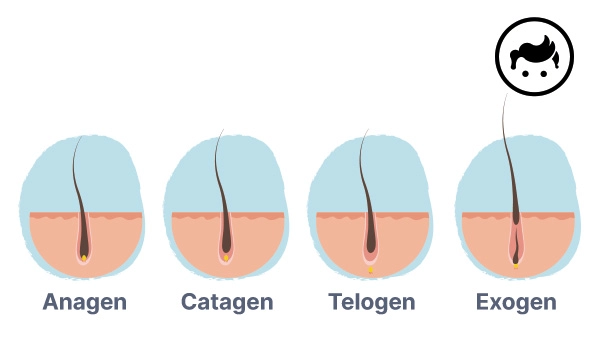
Listed below are the factors that can affect hair growth.
The hair root, shaft, and visible elements are within the hair follicle, where the hair maturation cycle initiates. It has three stages: anagen, catagen, and telogen. The follicle produces brand-new hair cells over the anagen stage. The hair thread emerges out of the follicle due to the rapid expansion of the base cells. It develops anywhere from two to six years. Meanwhile, the follicle subsides, and the strand discontinues developing throughout the catagen stage. The hair fiber is disconnected from the blood supply, and the follicle base cells cease proliferating. It persists for fourteen to twenty-one days. On the other hand, the hair fiber and follicle rest throughout the telogen phase. A new hair fiber in the anagen stage is going to push the hair fiber out of the follicle. It persists for twelve to sixteen weeks. Furthermore, a person’s scalp contains roughly 90% anagen, 1-2% catagen, and the rest is telogen. The quickest way to grow hair often includes maintaining a consistent hair care routine, getting regular trims to prevent split ends, and considering supplements like biotin or collagen that support hair growth.
The usual rate of hair growth is approximately 1.25 centimeters monthly or 15 centimeters annually. It is the typical rate of hair growth. However, it varies based on genetics, age, gender, hormone fluctuations, diet, and general health. For instance, hair growth possibly is quicker during the anagen phase of the hair development cycle than during the telogen phase. Moreover, persons of Asian origin grow their hair more quickly than people of African or Caucasian heritage. External variables such as hairstyling techniques, hair care products, and environmental conditions also impact growth rates. The exact answer to “How Fast Does Hair Grow?” is still undetermined. It is essential to remember that the pace of hair growth varies from person to person, and that a balanced diet and healthy lifestyle are necessary for healthy hair development.
It takes around six months for an individual’s hair to develop one inch in length, on average. However, hair growth varies by individual and is influenced by genetics, age, food, and lifestyle. The pace of hair growth also varies depending on the kind of hairstyle; shorter hairstyles tend to develop quicker than longer hairstyles, owing to more regular cuts that stimulate new follicles at the scalp level. Feeding the scalp vitamins and minerals for healthy hair is important since they enhance circulation, making strands stronger and less likely to break. The normal monthly rate of hair growth is around 0.5 inches or 1.25 centimeters, or 6 inches or 15 centimeters each year. Finally, the hair’s growth length still needs to be clarified. Most experts believe that with adequate care, including frequent trims every 6-8 weeks, people possibly anticipate acquiring 1 inch per month in length over six months. Proper food and products possibly speed up the process.
Yes, anyone can increase the anagen phase for hair growth. Various possible methods for enhancing hair development’s anagen phase exist. Consuming specific vitamins and minerals, including biotin and zinc, necessary for forming healthy hair is a vital step. Additionally, a topical medicine called minoxidil has been shown in clinical studies to encourage hair growth in some individuals. The use of compounds promotes hair development, such as saw palmetto extract, and other natural components, such as peppermint oil, tea tree oil, and rosemary oil, assist in boosting blood flow to the scalp and encouraging hair growth. It is important to find ways to reduce tension, as they are able to provoke hair loss.
Several factors are able to cause hair to grow faster than normal, involving genetics, hormones, diet, scalp health, hair care, and medical conditions. Genetics affect hair growth. Typical genes that govern hair development incline specific individuals to rapid hair growth. The genes determine the duration of the anagen phase, hair growth rate, and density. Moreover, hormone levels impact hair growth. Higher testosterone levels in men and women speed up hair growth. Estrogen inhibits hair growth. Thus, testosterone boosts hair growth while estrogen decreases it. Polycystic ovarian syndrome (PCOS) causes hormone imbalances and quicker hair growth. HRT and birth control drugs alter hormone levels and hair growth. Furthermore, protein, vitamin, and mineral-rich diets promote healthy hair development. Proteins, which create hair, are crucial. Vitamins and minerals, including A, C, D, and iron, help hair grow. Eating a hair-growing diet speeds up hair growth. Meanwhile, healthy hair requires proper hair care. It involves routinely washing and conditioning the hair, detangling it with a wide-toothed comb, and avoiding damaging hairstyles, such as tight ponytails or braids. Hair care promotes healthy scalps and quicker hair development. Additionally, healthy scalps develop hair. Dandruff-free hair grows more quickly. Regular hair washing and avoiding harsh chemicals help speed up hair growth.
One must see a doctor if they are worried about their hair growth or experiencing hair loss. It is essential if there is a family history of hair loss or sudden or unusual hair loss. The physician is capable of offering suggestions on the most effective method of treating hair loss and contributes to determining the reason for it. Additionally, see a doctor if experiencing scalp irritation, redness, or scaling or if any underlying medical conditions are possibly affecting hair growth.
Yes, these strategies are also able to be applied in a new hair transplant. Newly transplanted hair benefits from several hair growth techniques. However, transplanted hair is fragile after the treatment and needs special care to grow properly. Some specific things to keep in mind when after a hair transplant include eating a healthy diet, taking hair growth supplements, reducing stress, avoiding using too much heat-styling tools, being gentle while washing and brushing, avoiding hash styling and chemical treatments, and avoiding smoking, alcohol, and other activities that are able to hinder the healing process.
Yes, these strategies are also can help prevent hair loss. These include eating well, avoiding harsh style and chemical treatments, lowering stress, massaging the scalp, using soft hair care products, and taking hair growth vitamins. A diet rich in vitamins and minerals, notably vitamin C, iron, and biotin, help nourish hair. Healthy eating also prevents medically-induced hair loss. Additionally, harsh styles and chemical treatments harm hair and cause hair loss. Avoiding these procedures and utilizing mild hair products prevent hair loss and encourage healthy hair development. Moreover, stress disrupts hair development, causing hair loss. Meditation and yoga relieve stress and stimulate hair growth. Massaging the scalp increases blood flow to hair follicles, promoting hair growth and preventing hair loss. Furthermore, natural hair care products avert hair loss and maintain hair healthy. Saw palmetto and marine collagen supplements boost hair growth and avoid loss.
